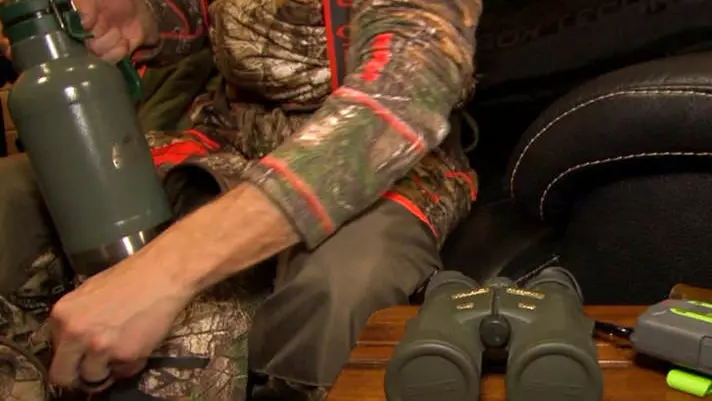Packing for a hunting lodge vacation

Many operators allow 23 kilograms (50lbs) per person, but call to confirm. Also, find out if bedding, including towels are supplied. Different lodges/resorts have different sleeping arrangements.
Pro Tip: When it comes to planning for a hunting lodge trip, if you are wondering about anything, do not guess. Just ask.
Clothing
In addition to your day to day clothing, ensure you pack:
- At minimum, a hunter orange solid vest and hat
- Warm hat and gloves
- Rain gear
- 1 light fleece jacket and 1 warm jacket
- Waterproof hiking boots and running shoes for relaxing time
- Long johns, particularly for spring or fall hunts
Hunting equipment
- Backpack
- Binoculars
- GPS unit
- All required tags, Outdoors Card, Licensing and paperwork for rifle
- Knife
- Lighter
- Topography map
- Rifle, ammunition, weapon case, cleaning supplies, scope or compound or traditional bow, arrows, sling, arm guard wrenches, wax etc.
- Safety blanket
- Flashlight or headlamp and spare batteries
- First aid kit
- Two-way radio (recommended)
Fishing equipment
Always a good idea in case your hunt is quickly successful:
- Rods, reels
- Fish finder
- Tackle
Miscellaneous items
- Snacks
- Camera and film
- Sunglasses
- Water bottle
- Sunscreen and bug spray
- Cooler
- Cash for tipping staff
- Soft drinks and alcohol for your cottage
- Personal toiletries, including baby wipes
Meals
If you are not doing American Plan (meals included) remember that meal planning is essential. Set up a menu for the duration of your trip and prep for meals prior to leaving home if possible. For example, for a weeklong trip you could prep all dinners:
- Jar pasta sauce
- Homemade soups jarred
- Chili jarred
- Sloppy Joes
- Stew
- Casseroles such as chicken and rice
- Pulled pork
- Complete meals with add ons like pasta, buns and bread
Remember to find out about any food allergies within your group so this can be taken into consideration when planning meals.
Use frozen foods first, saving jarred dinners for the end of your trip. Keep in mind that thawed foods only last for about three days, so plan accordingly.
For breakfast and lunches:
- Breakfast foods such as eggs, oatmeal packets, bacon, bread, dried cereal
- Fruit that does not go bad easily (for example, apples rather than bananas)
- Lunch meat, cheese, butter, peanut butter, jelly, canned tuna
- Mac and cheese
- Hot dogs
- Bread, buns
- Juices in cans or plastic bottles that don’t need refrigeration until opened
Keeping meals simple and healthy is the best. And don’t take up much space, but a small stash of condiments and spices is nice to have.
Related content
Last updated: November 25, 2024


